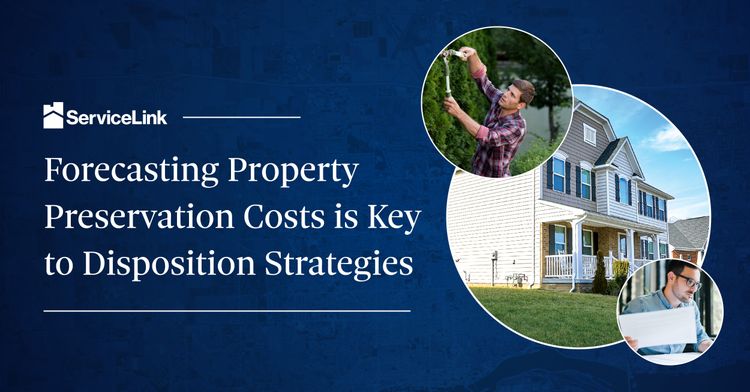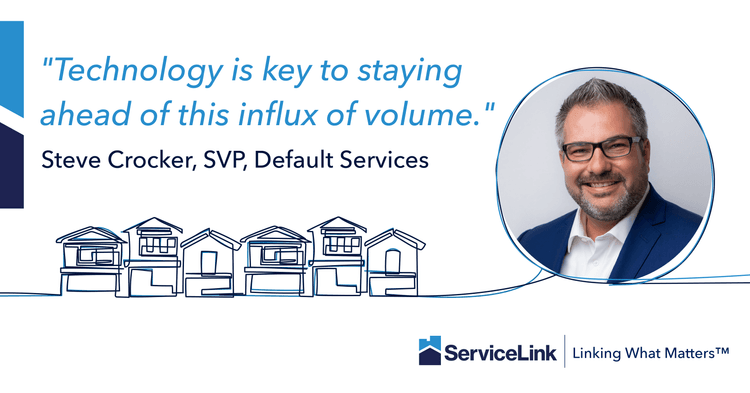Servicers and investors with clear insight into risks and potential costs can make well-informed asset management and disposition decisions in the pandemic-impacted market.
By: Anthony Scotese, Vice President, Operations, ServiceLink Field Services
Real estate investors see tremendous opportunity ahead fueled by properties selling at a record pace across many markets; coupled with the anticipation of eviction and foreclosure moratoriums loosening for the first time in over a year helping to replenish supply and meet some of the pent-up demand. In this fast-moving market, asset management and disposition decisions need to be made quickly and confidently, making the ability to accurately predict property preservation costs essential.
Add to this mix the outrageous increase in commodity pricing and constraints resulting from pandemic supply chain and source material challenges (according to an analysis by the National Association of Home Builders, lumber prices tripled from April 2020 to April 2021, causing the price of the average home to increase by nearly $36,000), it’s easy to see why getting clarity on property preservation costs is possibly more important now than ever before.
Historically, investors have been limited to relying on their own records to calculate high-level averages that might help them forecast these costs. But today, EXOS One Marketplace, an asset-decisioning tool developed by ServiceLink, provides AI-based probability and cost modeling to provide investors and servicers with better information, faster. EXOS One Marketplace drills down to the ZIP code level to forecast the likelihood that a particular property might incur expenses for certain damages and issues, so you can determine the best disposition path.
EXOS One Marketplace: Insight Throughout the Default Cycle
Real estate assets can present different challenges to forecasting and managing property preservation costs depending where they are in the default cycle: Distressed properties that are occupied don’t allow access for conducting proper inspections. Once a property becomes vacant, your field services team needs to know what to prepare for. And of course, when you are considering investing in a new pool of loans, understanding any and all risk is paramount to prudent decision-making.
The probability modeling and cost modeling of EXOS One Marketplace cut through these challenges by providing insight at every stage:
When property is occupied
For properties that are occupied — based on ServiceLink data, that’s about two-thirds of loans that go through foreclosure sale — EXOS One Marketplace is able to predict outlier issues with a high level of accuracy including mold, water damage, roof issues, hazard claim damages, etc., and then estimate the cost of remediation or repair. It offers insight into what you may be walking into once the property is vacated.
Let’s say, for example, that EXOS One Marketplace predicts that a certain occupied property with several outbuildings and a large lot has a high probability of roof damage and subsequent mold damage, in addition to a large amount of debris that will need to be cleared. Repairs and remediation could very well extend the conveyance time frame and increase the likelihood of penalties. In addition, a potentially large portion of the expense may not be reimbursable by HUD. So if you or your servicer is entertaining a qualified offer that’s close to reserve, you might give serious thought to contributing more towards the loan closing rather than having to deal with damage and expose yourself to potentially nonrecoverable expenditures on that asset.
When you consider how expensive conveyance can be, it makes sense to identify which assets are likely to require the highest expenditure so you can make better asset management decisions early on. In a 2018 report, the Urban Institute pointed out the sizable difference in property preservation costs for FHA properties that were conveyed — $8,819 — versus those taking a nonconveyance route — $2,113. Better to make a modest contribution to push a high-risk property to sale than to take that $6,700 hit later.
When property is (or becomes) vacant
Whether pre- or post-foreclosure, once a property has been vacated and you have a field services team making repairs and maintaining a property, EXOS One Marketplace can continue to provide modeling for anomaly detection. Simply put, this modeling enables you to flag and keep a close watch on properties with a high probability of certain kinds of damage.
In this example, a property has no current evidence of water damage, but you know, based on information generated by EXOS One Marketplace, that there’s a high probability of water intrusion. This knowledge enables you to more proactively monitor that risk through property preservation efforts. For example, if ServiceLink Field Services were maintaining this property, we would make sure that every time we sent out a work order, we would include a note for the contractor to double-check the basement to ensure no such damage exists, and to take corroborating photos. We would proactively manage the risk associated with that asset so that if and when water intrusion occurred, we would be prepared to remediate it, early and quickly — again, in the interest of preventing a larger expense later.
When due diligence is required
When you are looking into buying a new pool of nonperforming loans or a pool of loans that contains some NPLs, your due diligence review should reveal which assets could be high-risk for increased property preservation expenses and where you may end up subjecting yourself to losses. EXOS One Marketplace assists you to uncover these high-risk assets and predict their related costs before you acquire the portfolio, which may lead you to (a) try to adjust the purchase price, (b) flag the loans once they’re ingested to put the new servicer on notice or (c) reject the pool outright as too high-risk.
The reality is that, left unidentified or unchecked, property preservation can represent huge losses down the road, especially when delays during service transfer cause missed timelines. Damaged properties don’t magically get better on their own, their damage progresses. It’s generally wise to take the loss as early as possible, before it spins out of control. EXOS One Marketplace provides the transparency and insight investors and servicers need to make these decisions earlier in the process than has ever been possible before, saving money, time and effort.
Discover More about EXOS One Marketplace
In addition to probability and cost modeling, EXOS One Marketplace can project the amount of debris that may be at a property post-sale, as well as how long it may take to place a property in conveyance condition and get it back to HUD — both of which can translate into significant cost. It provides investors and servicers with functionality and performance beyond property preservation management as well. Learn more about EXOS One Marketplace and its full suite of default services.


